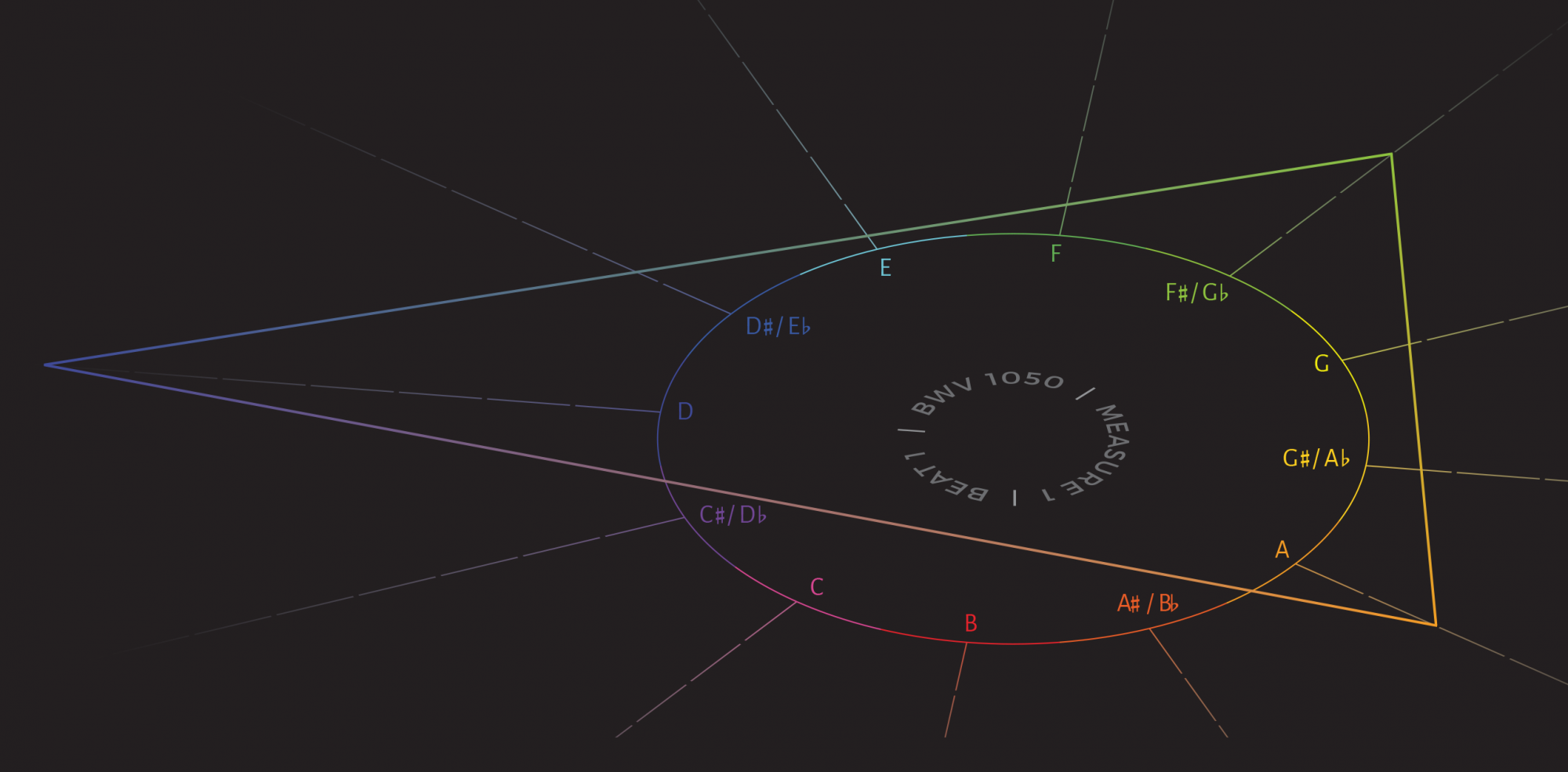View PDF
About this Volume
We are pleased to present three articles in Volume 32, each of which constructively problematizes music-theoretical orthodoxies in thoughtful and innovative ways.
Andrew Pau argues for a re-evaluation of the theories of Genevan music theorist Jean-Adam Serre (1704–1788), drawing from two key essays published in 1753. Through a close reading of Serre’s writings—and by comparing Serre’s ideas to those of Rameau and Kirnberger—Pau demonstrates that Serre merits a more substantial place in the existing historical narratives of functional theory and harmonic dualism.
Moving forward from the eighteenth to the twentieth century, Ellen Bakulina challenges the applicability of tonal centricity to Russian hymns and music rooted in this tradition—specifically, Sergei Rachmaninoff’s All-Night Vigil (1915). Bakulina builds on Andrei Miasoedov’s concept of “proto-harmony” (1998) with her own concept of the proto-harmonic complex, and she applies this approach to two movements from the All-Night Vigil.
In our final article, Yosef Goldenberg notes that the two most common meanings of the term “diatonic modulation” are in fact quite distinct. Using a number of examples, Goldenberg offers several new categories for diatonic modulation, which more clearly account for key relationships and the pivots employed; in addition to clarifying the theoretical foundations for diatonic modulation, this study may have pedagogical implications for those of us teaching music theory.1
Reflective of the ongoing expansion of the field of music theory—its objects, methods, and goals of inquiry—the volume finishes out with three book reviews on subjects that span two centuries.
Rachel Lumsden welcomes the field as a whole to confront recent trends in feminist theory with a critical account of the first entry (Concert Music, 1960–2000) in the series Analytical Essays on Music by Women Composers. Praising the volume’s insightful analyses of works for large ensemble by (among others) Chen Yi, Sofia Gubaidulina, and Libby Larsen, Lumsden dares future projects to strive for intersectional musical discourse.
In keeping with a contemporary subject, Philip Stoecker explores Edward Venn’s monograph analytic study of Asyla, Thomas Adès’s most significant foray into symphonic composition. Stoecker spotlights the technical analysis of pitch structures and issues of formal structure, all while tying in the reception history of the 1997 work.
Finally, Jeremy Orosz invites the readership of this journal to tease apart the web of connections between Robert Schumann’s aesthetic world-view and the musical cycles that he based on the literature of E. T. A. Hoffmann, including Kreisleriana and Nachtstücke. Orosz advocates for the inclusion of John MacAuslan’s Schumann’s Music and E. T. A. Hoffman’s Fiction on any music theorist’s shelf.
Diversity, Inclusion, and Accessibility
As Intégral’s Co-Editors, we are committed to promoting diversity and inclusion in our publication. At the 2018 Joint Annual Meeting of the Society for Music Theory and the American Musicological Society in San Antonio, Texas, a group called Project Spectrum—comprised of music theorists, musicologists, and ethnomusicologists—held the pre-conference symposium Diversifying Music Academia, devoted to urgent issues of diversity and inclusion in music academia.2 In addition, the conference program proper demonstrated significant interest in diversity and inclusion among the AMS and SMT memberships.
Journals play an important role in the health of academia. Articles grant some of the weightiest evidence of research accomplishment within tenure files, and they are one of the key ways in which we speak to each other as scholars, across long distances and even generations. The need for diversity within this network of actors and interests is just as serious for a journal as it is within large institutions with established diversity offices. It may seem that Intégral engages a fairly small and homogeneous audience: instructors and students at universities in the English-speaking world. However, our relatively small community belies the fact that music theorists interact with many musicians and scholars outside of our discipline. The choices that we make as the leadership of this journal are visible, and they can have significant impact, even on individuals who do not directly hear the voices that our editorial board and our staff decide to include.
Diversity, construed broadly, is necessary for a healthy and well-functioning society. We believe it is therefore important to affirm our commitment to diversity understood among many lines. Central to the different types of diversity is diversity of racial and ethnic background: as the Society for Music Theory’s 2017 demographics report demonstrates,3 there is a striking lack of racial and ethnic diversity among our membership, as well as a significant underrepresentation of women in the overall Society’s membership.
There are many ways for journals to respond to the dearth of diversity in music theory as a discipline, without having to compromise the rigorous peer-review process to which Intégral is committed. We will briefly note two ways in which our journal aims to include a greater diversity of voices, so as to rectify music theory’s exclusion of many important voices: the voices of people of color—especially women of color—and white women, as well as disabled voices.
As editors of Intégral, we have decided to implement a system of collecting demographic data from those who submit to our journal, on a strictly confidential and voluntary basis. We are cheered that the Society for Music Theory is taking this step with Music Theory Spectrum and Music Theory Online, and we are hopeful that other journals will follow suit. It is important for us to have a clear picture of diversity within our primary publishing venues, informing our view of the field as a whole.
We are pleased to conclude this Editor’s note with an exciting announcement: Intégral will be transitioning to an online, open-access format in the next year. This decision is spurred by our commitment to a greater diversity of submissions and submitters, a more equitable and accessible dissemination of the scholarship we publish, and the exceptional potential of the online medium. Volume 33 will serve as the first of many exclusively online volumes, and all back issues will be uploaded to the new open-access website in the coming years.
While this decision brings with it many significant changes, the online format, in our view, holds numerous advantages over our current model. Online journals are potent forces, able to manage myriad multimedia formats. We not only welcome but encourage submissions that incorporate audio, video, animations, interactive PDFs, voiceovers, and more. Furthermore, the website will incorporate a blind submission page for authors along with a voluntary survey so that we may collect reliable, self-reported demographics on those who submit to our journal. Open-access publication provides greater accessibility to independent scholars, students, and non-specialists alike who may be unable to afford the cost of print subscriptions or may not have access to a library that holds a subscription to Intégral. On a practical note, we expect the publication turnaround time to decrease as we will have fewer moving parts to manage and will be able to streamline the editing and uploading of content to our website. Perhaps most importantly, given the current U.S. administration’s anti-environment policies—which not only destroy the globe but also disproportionately harm low-income communities and communities of color—online publication is far more environmentally sustainable and reduces to a negligible degree the environmental footprint of our journal for the foreseeable future.
As we undergo the intensive project of transitioning to an online, open-access format, we invite as always submissions for Volume 33 on a broad range of musical topics, including theory, analysis, and criticism. We welcome especially submissions that incorporate the multimedia possibilities of online publication.
Catrina Kim & Sam Reenan
Co-Editors
Notes
- Special thanks to Kieren MacMillan for typesetting the musical examples and graphics in Bakulina’s and Goldenberg’s articles.
- For information on the symposium, see https://projectspectrummusic.com/. Two of our officers are members of Project Spectrum: Lissa Reed, publicity manager, and Catrina Kim, co-editor.
- Jenine Brown, https://societymusictheory.org/files/SMT_Demographics_Report_2017.pdf. See pages 11 and 12 for membership data by gender and race/ethnicity. The SMT’s demographics reports are posted annually at the following website: https://societymusictheory.org/administration/demographics.

